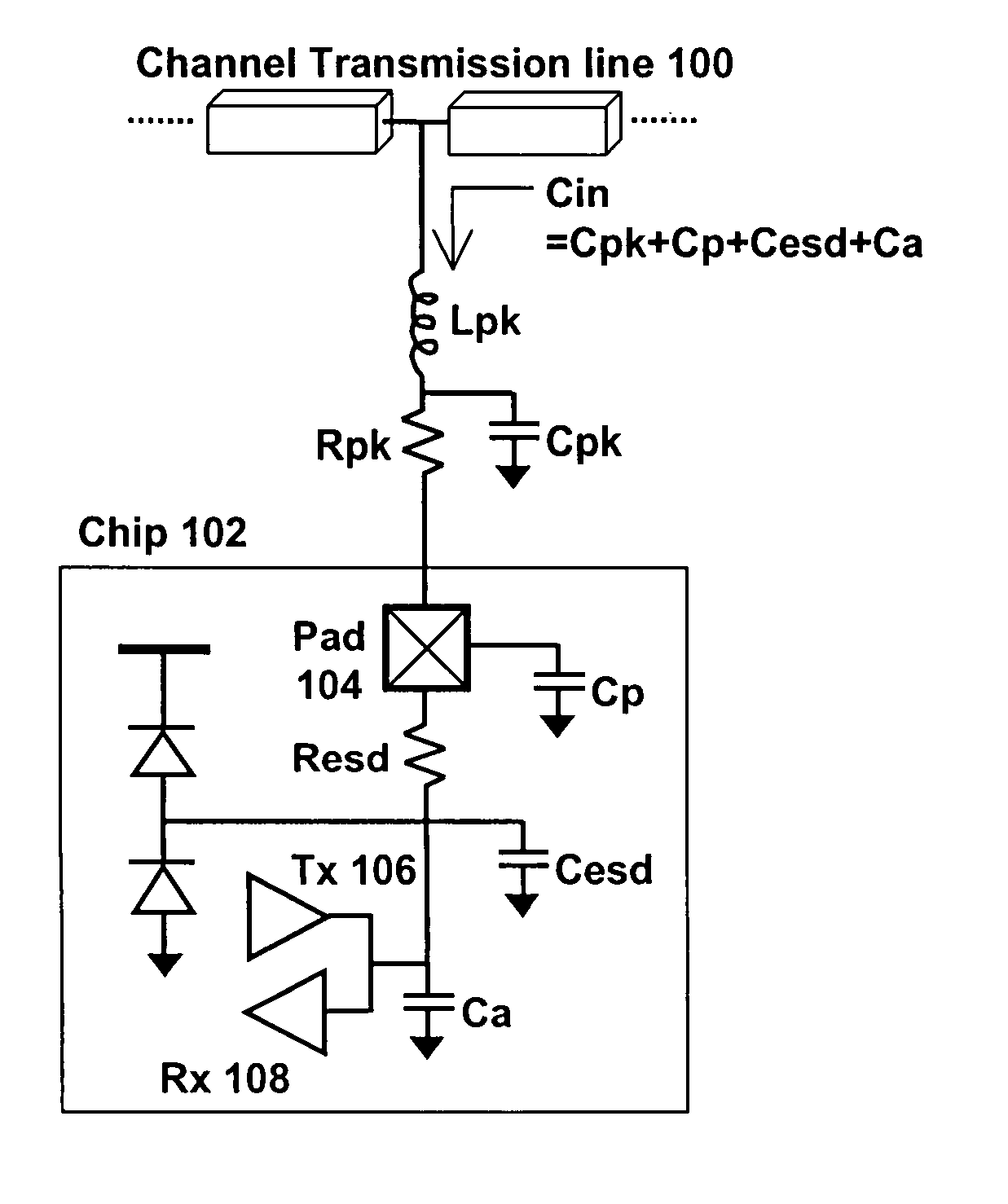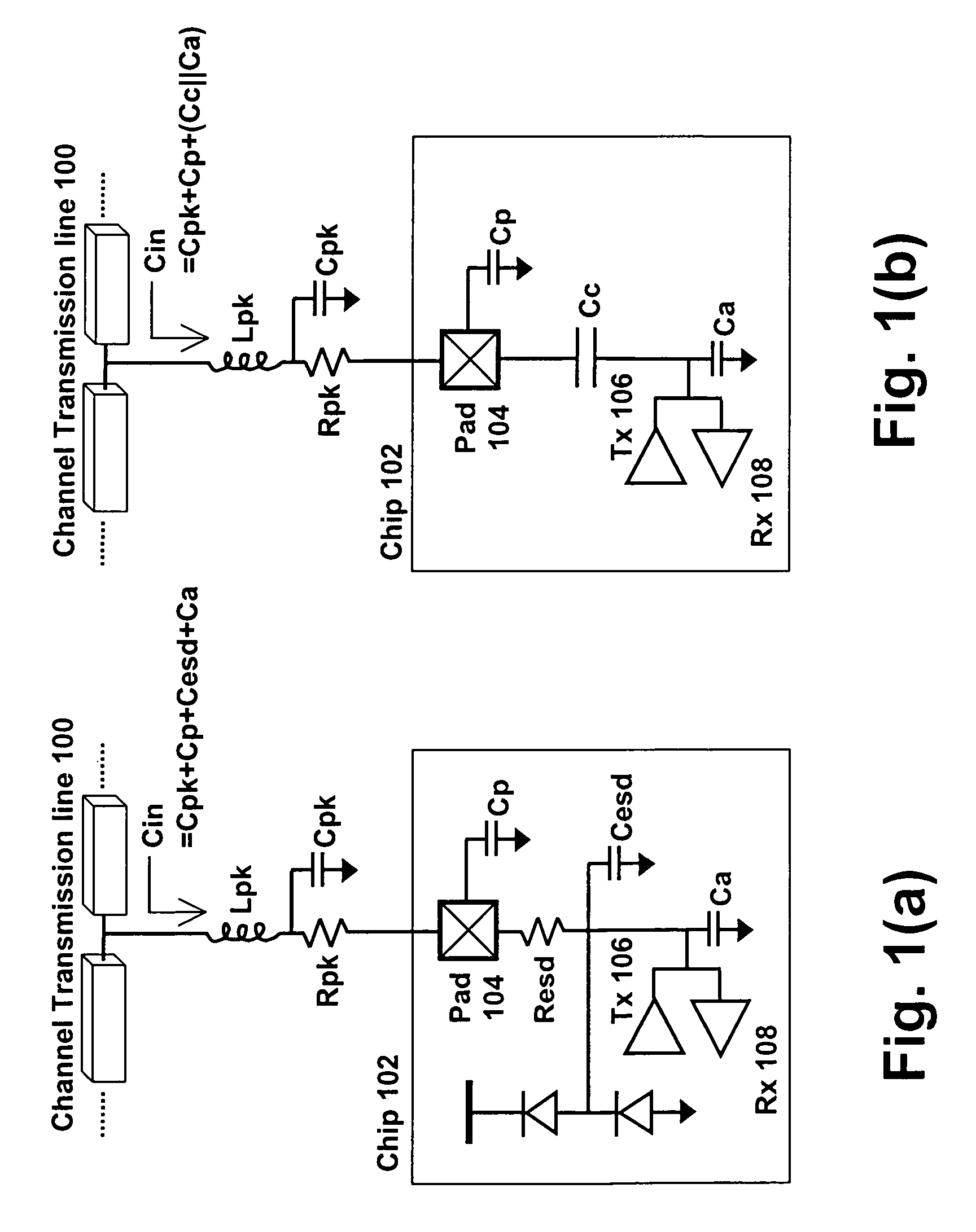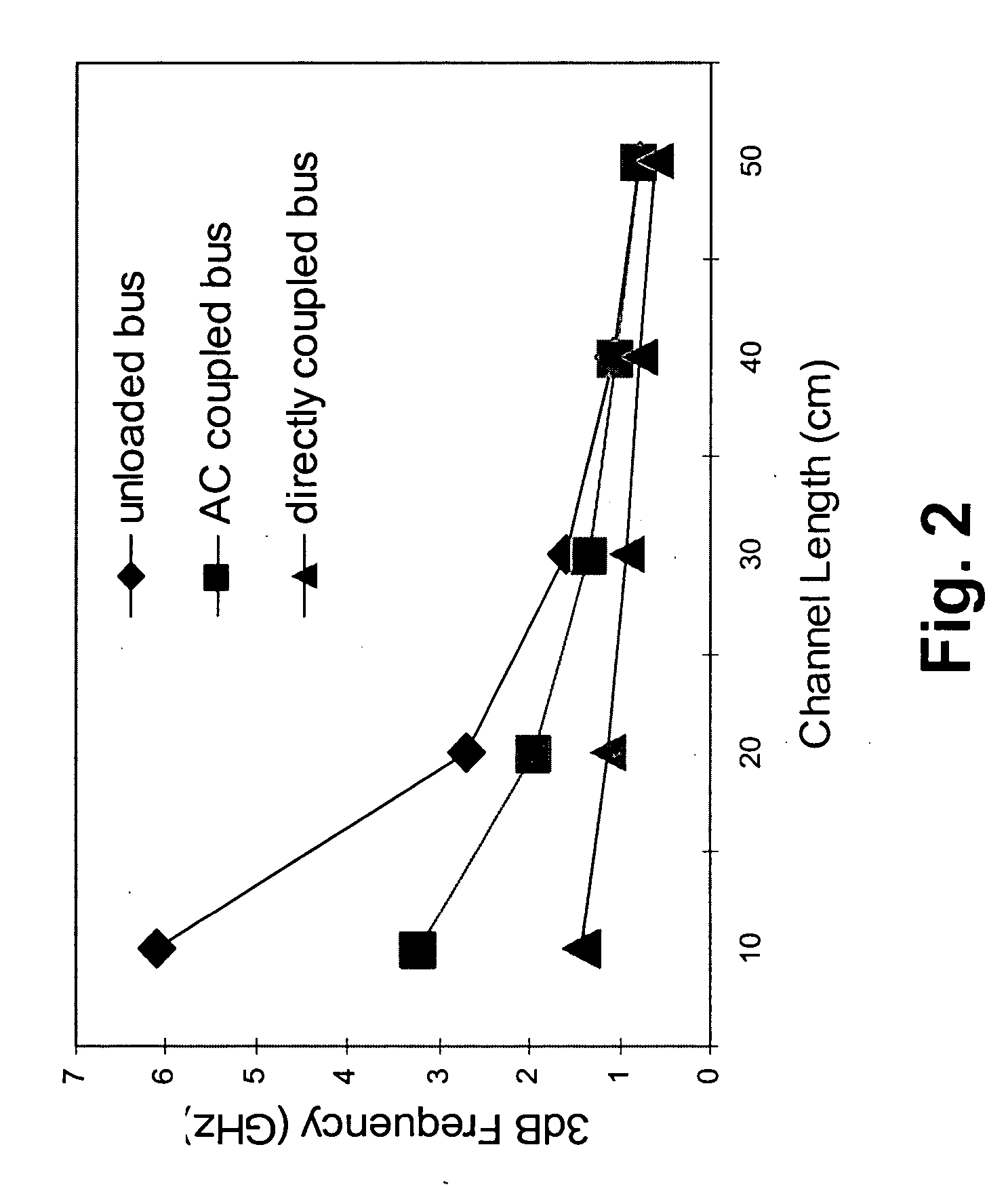Capacitively coupled pulsed signaling bus interface
a pulsed signaling and bus interface technology, applied in pulse techniques, instruments, baseband system details, etc., can solve the problems of increasing signaling power consumption, difficult integration of a large number of high-speed i/os on a single chip, and low signaling power of parallel multi-drop or multi-point buses, etc., to achieve low power, reduce i/o signaling power, and increase the available channel bandwidth
- Summary
- Abstract
- Description
- Claims
- Application Information
AI Technical Summary
Benefits of technology
Problems solved by technology
Method used
Image
Examples
Embodiment Construction
[0047] In the following description of a preferred embodiment, reference is made to the accompanying drawings, which form a part hereof, and in which is shown by way of illustration a specific embodiment in which the invention may be practiced. It is to be understood that other embodiments may be utilized and structural changes may be made without departing from the scope of the present invention.
[0048] Overview
[0049] A new capacitive coupled pulsed signaling bus interface (CCBI) has been developed as an effective solution to reduce the I / O signaling power and improve the signal integrity in low-cost multi-point or multi-drop or point-to-point parallel bus systems. A single ended or differential synchronous pulsed signaling I / O technology utilizing on-chip capacitive coupling for low power, high bandwidth, parallel bus links (such as a system bus or a main memory bus) has been proposed.
[0050] Capacitive Coupled Pulsed Signaling Bus Interface (CCBI) System Architecture and Interco...
PUM
 Login to View More
Login to View More Abstract
Description
Claims
Application Information
 Login to View More
Login to View More - R&D
- Intellectual Property
- Life Sciences
- Materials
- Tech Scout
- Unparalleled Data Quality
- Higher Quality Content
- 60% Fewer Hallucinations
Browse by: Latest US Patents, China's latest patents, Technical Efficacy Thesaurus, Application Domain, Technology Topic, Popular Technical Reports.
© 2025 PatSnap. All rights reserved.Legal|Privacy policy|Modern Slavery Act Transparency Statement|Sitemap|About US| Contact US: help@patsnap.com



